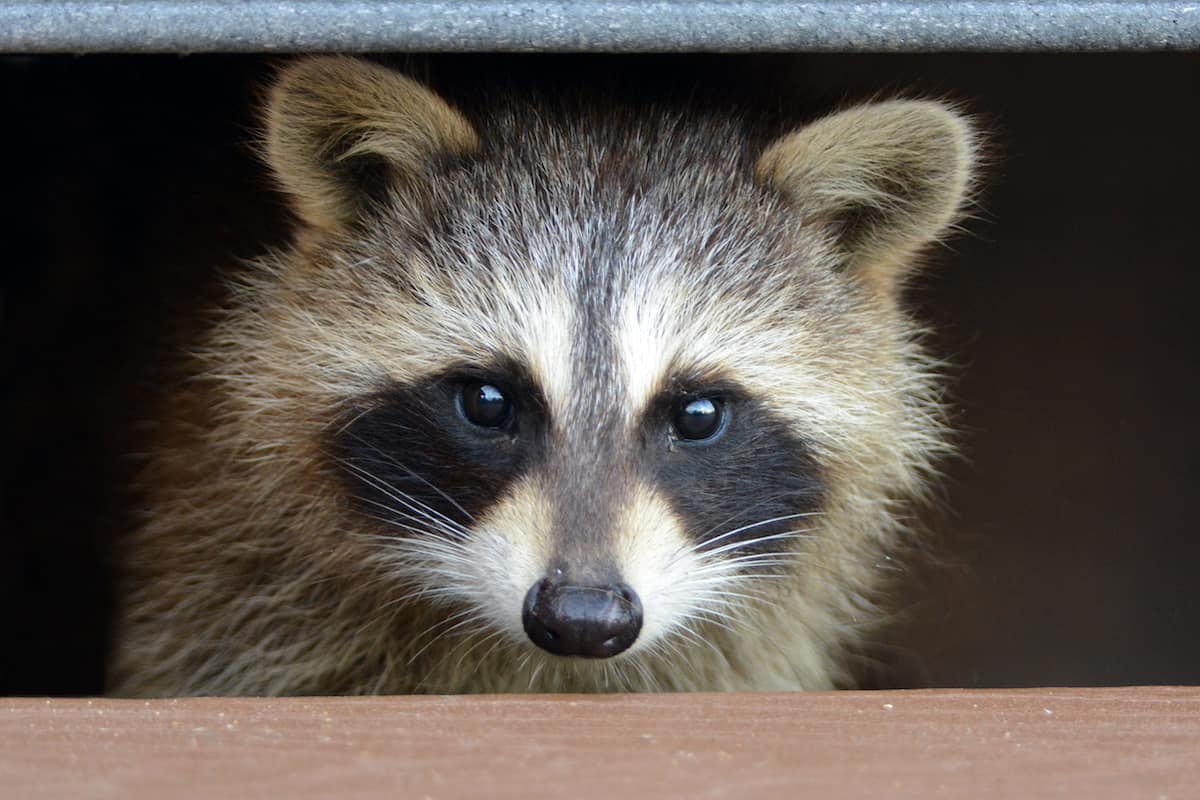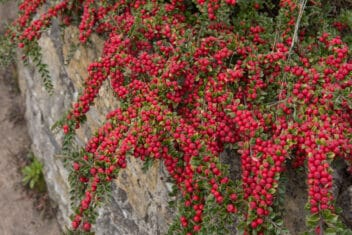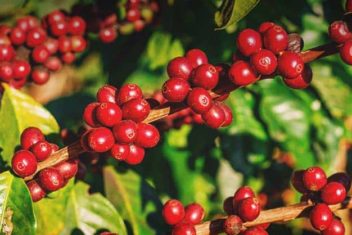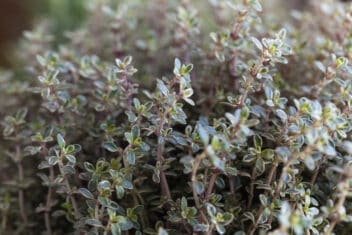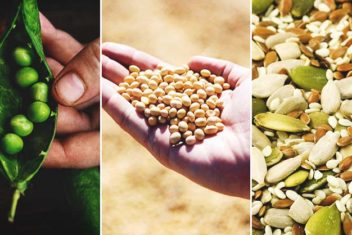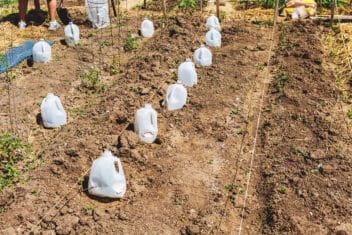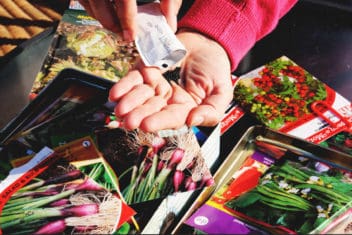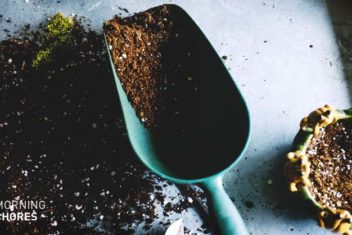Raccoons are cute, extremely smart, and highly skilled troublemakers. They aren’t deliberately bad, but raccoons find it hard to resist a productive garden or orchard.
They’re also extremely persistent. You have to admire someone who doesn’t give up and tries their hardest. Those are good qualities. Except, maybe when they use them to get in your garden and eat your sweet corn.
Wondering what you can do about these adorable troublemakers? Here’s how to deal with them in your garden the humane way.
Get to Know the Bandit
As well as being an organic farmer, I have worked in the field of wildlife conservation and for the past seven years.
I have been a licensed wildlife rehabilitator and the animal I get the most phone calls about? Raccoons. Sometimes this is about orphaned babies but more often than not it is just someone wanting some advice because they have a conflict with a coon or as we often call them – the trash panda.
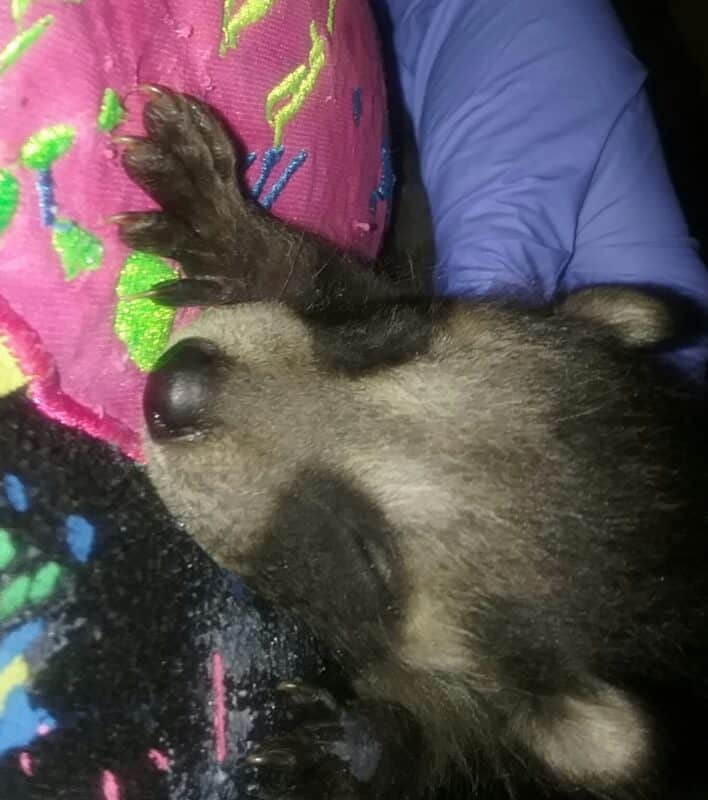
Any skilled safecracker will tell you its all about touch. Raccoons have that touch. They have extremely dexterous and nimble hands.
Raccoons are good at opening enclosures, undoing snaps, and even untying straps. My education raccoon has a master lock on his enclosure because he would let himself out and go into the workroom and take down all my tools from the pegboard.
Raccoons use their hands to perceive information. In fact, up to two-thirds of their brain’s frontal cortex is developed to receive messages from the hands.
Raccoons are agile. They can climb, swim, and jump. The only thing they can’t do is run fast. Their bodies are a bit awkward for running. And then, of course, they have that mask to help them blend in.
Consider the Raccoon Diet
Raccoons are omnivores and eat a variety of foods. They live all over America and have adapted to eating everything from frogs and small fish, to insects, rodents, bird eggs, and native vegetables, fruits, and nuts.
From your garden, they’re particularly fond of corn, tomatoes, watermelons, sweet potatoes, and peas. They also enjoy orchard fruits such as apples, peaches, and strawberries. You can see that they have a big sweet tooth.
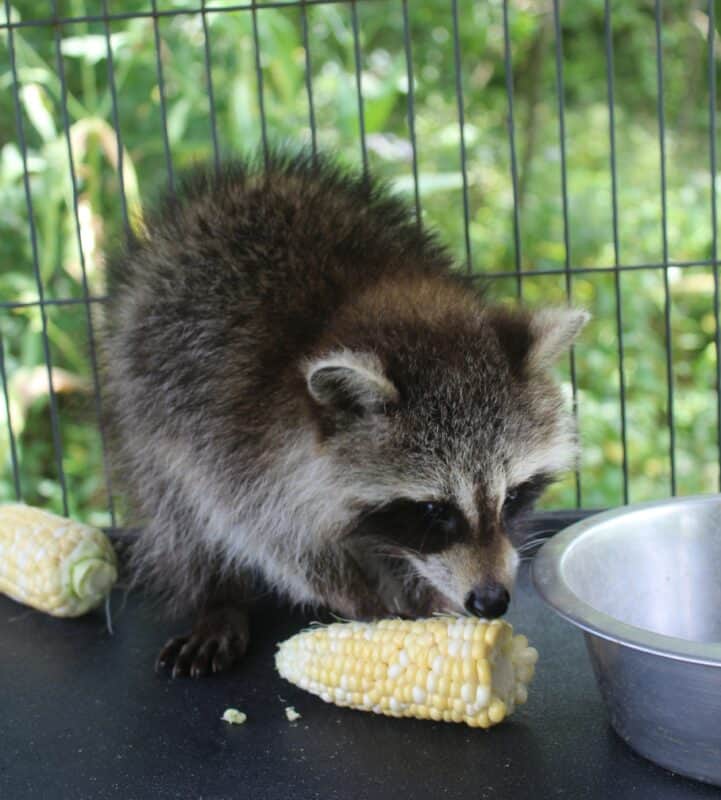
Raccoons are also attracted to pet food, bird feeders, and smelly trash cans.
Identifying the Culprit
What is so frustrating about raccoons is that they’re extreme slobs. I can tell you from experience that they don’t care where they poop and they scatter their food and toys all over, as opposed to a baby skunk who will poop in one corner of the cage and have their blankies and toys in another corner.
If your corn stalks are toppled over with the corn half-eaten or a bite was taken out of several peaches (because the first bite is the best) then you have a raccoon. Or possibly the whole clan.
Raccoon paw prints are easy to identify. They have five toes with non-retractable claws.
Keeping Raccoons Out
Want to keep raccoons out of your garden? Here are a few techniques to try.
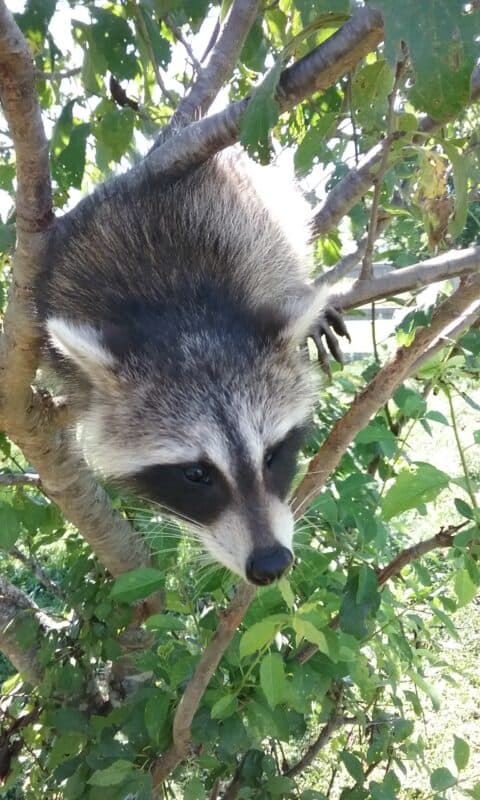
1. Build a Fence
Fencing is the most sure-fire way to keep raccoons out of the garden. Raccoons need a tall fence of woven wire. The spacing should be small with openings not greater than 2×4 inches.
Solid fencing such as the woven reed or bamboo fencing may help to a certain extent. Wildlife can’t see through the fence so they may not try to enter. However, they can still smell ripe crops, so that may give them an incentive.
Another tactic is to install a six-foot wire fence but don’t attach the top 18 inches to the posts. That way it will sway back when the raccoon tries to climb.
2. DIY Dog Kennel Garden
Dog kennels work well. One of my friends lives in a wooded area with just a small clearing for a garden. However, between the deer and the raccoons, they had no garden left at the end of the season.
Then when looking on Craigslist one day he saw two used dog kennels for sale. He bought them, separated the top from the bottom, and set them up in the clearing and added wire fencing for a top (remember raccoons climb).
He then built raised beds inside the kennel. It works wonderful – in fact, I’ve considered using it for my goats and fawns to protect brambles, which they love.
If you have a precious crop that raccoons can’t resist, consider this clever DIY option.
3. Try Electric Fencing
An electric fence can be simpler to install. Use two strands. Place one at six inches across the ground and one at 12 inches.
Remember that grass and weeds growing under the wires will short out the electric. Keep that area mowed.
You can also use electric netting. A short netting less than two feet tall will deter raccoons.
With short netting, you don’t have to worry about going in and out. You can just hop over the fence into the garden. Unless you are like me and a bit clumsy.
4. Deter Them With Smells
Raccoons don’t like to walk through things that smell bad or might irritate their sensitive paws. Blood meal and wood ashes work well to deter raccoons. They are also a win-win if you are an organic gardener since they add nutrients to your soil.
Just sprinkle them in a ring around your plants. The ring should be about six inches wide. Otherwise, they will just tippy toe right over your barrier.
However, both sink into the ground and get washed away when it rains so you do have to replenish frequently.
In addition, you can try garlic mixed with chili powder. The downside is that you would need a lot to properly protect your garden. You might try sprinkling it around your favorite or most at-risk plants.
5. Noise is Your Friend
If you live in the country, you might try putting a radio in the garden. Tune in to an all-night talk show and the raccoons won’t want to approach the humans.
This may not work as well in urban areas. City raccoons become used to the sounds and smells of humans and are no longer intimidated.
You can also try hanging aluminum pie pans or windmills, however, I find that this only works for a quick minute. The raccoon investigates and finds out that they are not a threat. Then he goes on his merry way.
6. Plant Extra Food
This is a sure-fire way to keep everyone happy. Plant extra. You will have lots to share with your wildlife and human neighbors.
Human beings have destroyed a lot of wildlife habitat. We’re now competing for space. Planting extra can be seen as a way to give back to the wildlife who has lost their homes to development.
7. Clean Up Your Yard
Raccoons love hidey places in the garden. Brush piles, old wooden barns, haylofts, junk cars, the woodpile, and brushy areas. Clean up these areas so they’re not as appealing.
8. What About Trapping?
Trapping is not the cure-all you may think it is. The first lesson is that animals will always fill any ecological niche that is available. What does that mean for you?
If you remove an animal from your territory you simply create an opening for another to come take its place.
Trapping and relocating is illegal in many places. Nature works in a balance and when you throw an animal into an unfamiliar location they are typically attacked. Even as a wildlife rehabilitator I have to seek permission if I were to release an animal on government property.
Prevent Raccoon Visitors
Prevention can help make your property less raccoon friendly.
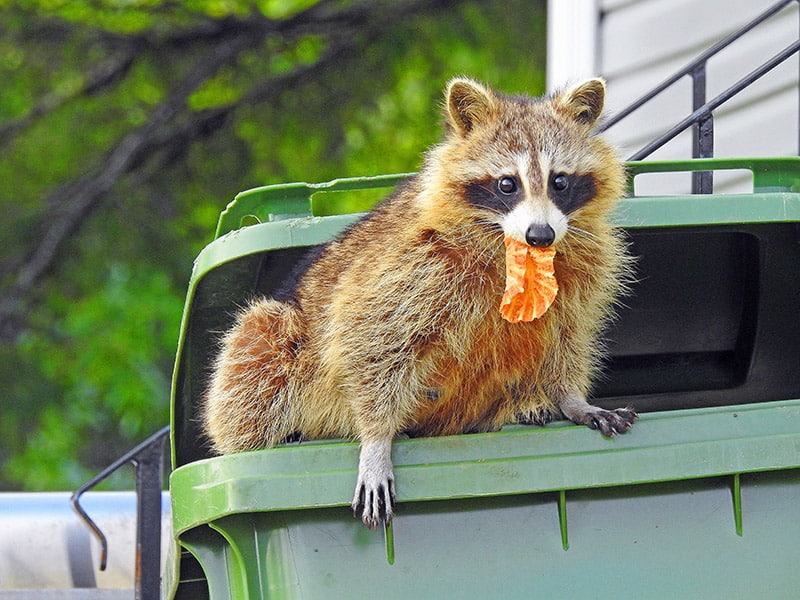
- Buy locking straps for your garbage cans. Think bear-proof.
- Don’t feed pets outside.
- Keep bird food in locked containers. You may have to take a break from feeding your feathered friends if you are having a serious raccoon invasion.
- Grow tall corn varieties such as ‘silver queen.’ Shorter varieties are easier for the raccoons to reach.
- Grow a Three Sisters Garden – that’s corn, beans, and squash planted together. The squash has large leaves and is somewhat prickly. The raccoons don’t like walking on it.
- Place baffles around trunks of fruit trees to deter climbing.
- Teach your large dog or livestock guardian to monitor the garden.
Use Caution
Remember to use caution if you find out you have a raccoon coming to your garden or home. Raccoons are defensive – if they feel threatened they may attack.
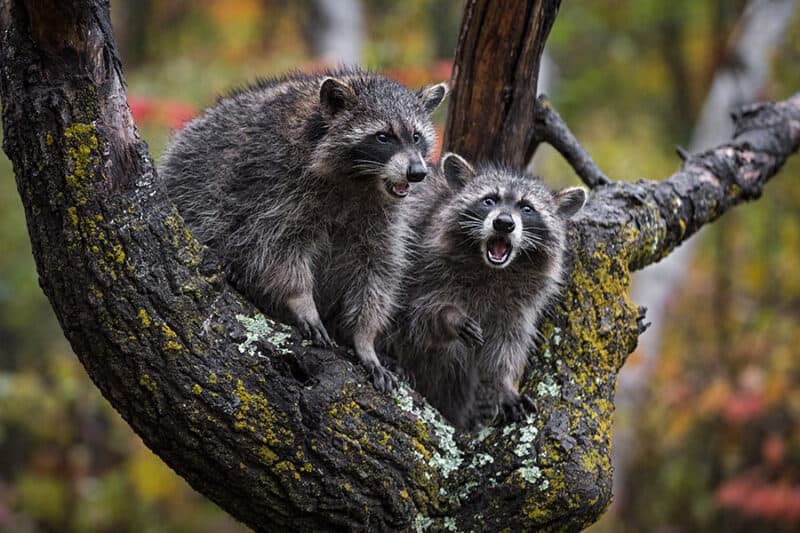
Raccoons may carry diseases and parasites such as distemper and roundworms. They are famous as the face of rabies. While raccoons can carry rabies in most areas foxes, bats and skunks are the primary vectors.
Don’t handle raccoon manure as they often have baylisascaris or raccoon roundworm. This is a serious parasite that can be transmitted to humans. If a raccoon leaves manure then use a plastic bag to pick it up and dispose of it.
As a homesteader and a wildlife rehabber, I understand that there is a balance between protecting our property and allowing wildlife to have their freedoms as well. We can all get along!
One of the things that I do is provide wildlife habitat that meets their needs for food, water, and shelter. Then I protect my garden, orchards, and livestock areas and basically say this part of the farm is off-limits.
